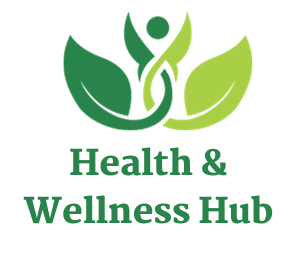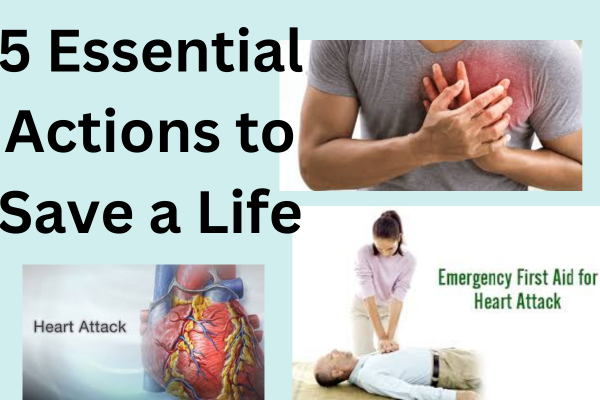A heart attack can strike without warning, and knowing how to respond in those critical moments can make all the difference between life and death. Heart attacks occur when the blood flow to a part of the heart is blocked, causing the heart muscle to suffer from a lack of oxygen. This can lead to severe damage or death if not treated immediately. Understanding what to do in the event of a heart attack can not only save a life but also minimize the damage to the heart. In this blog, we’ll discuss five essential actions you should take when someone is experiencing a heart attack.
Table of Contents
Toggle1. Call Emergency Services Immediately
The first and most crucial step is to call for help. If you suspect someone is having a heart attack, don’t hesitate—call emergency services (911 or your local emergency number) immediately. The faster professional medical help arrives, the better the chances of survival.
Why is this important?
A heart attack can rapidly deteriorate into a life-threatening situation. Emergency responders can provide critical treatments like defibrillation, oxygen, or medications en route to the hospital. The sooner they arrive, the more time you give the person to receive life-saving medical care.
What should you say when you call?
When calling, remain calm and provide essential information such as:
- Your location
- The victim’s symptoms (e.g., chest pain, shortness of breath)
- Any known medical conditions or medications they may be taking
While you wait for help, move on to the next steps to assist the person.
2. Keep the Person Calm and Comfortable
Once emergency services are on their way, your next goal is to keep the person calm and reduce the strain on their heart. Have them sit down or lie back in a comfortable position. Typically, sitting in a relaxed position with their back supported and knees bent is ideal, as this minimizes stress on the heart.
Why is this important?
Stress and anxiety can make a heart attack worse by raising heart rate and blood pressure. By keeping the person calm and comfortable, you’re helping to prevent further strain on their already compromised heart.
What if they are unconscious?
If the person becomes unresponsive or loses consciousness, make sure to move on to step 5: performing CPR.
3. Administer Aspirin (if they are conscious and able)

If the person is conscious and not allergic to aspirin, offer them a regular-strength aspirin tablet (300-325 mg) to chew and swallow. Aspirin works by thinning the blood, helping to prevent further clotting that could block the arteries and worsen the heart attack.
Why is this important?
During a heart attack, blood clots often form and obstruct blood flow to the heart. Chewing aspirin helps to inhibit platelets in the blood from sticking together, slowing the formation of new clots.
How should it be administered?
- Ensure the person is not allergic to aspirin.
- Give a regular-strength (or four baby aspirins) and have them chew it. Chewing allows the aspirin to work more quickly by entering the bloodstream faster.
4. Loosen Tight Clothing
- Once the person is seated and has taken aspirin, loosen any tight clothing, especially around the neck, chest, or waist. Remove or loosen belts, ties, or bras to allow easier breathing and reduce pressure on the chest.
Why is this important?
- Tight clothing can constrict breathing and increase discomfort during a heart attack. By loosening these items, you can help alleviate some of the pressure on the chest and make it easier for the person to breathe while waiting for emergency services.
What else can be done?
- Encourage the person to take slow, deep breaths to help them stay calm and prevent hyperventilation, which can worsen the situation.
5. Perform CPR if Necessary
- If the person loses consciousness or stops breathing, it’s essential to start CPR (cardiopulmonary resuscitation) immediately. CPR can keep oxygenated blood flowing to the brain and other vital organs until emergency responders arrive. If you’re not trained, emergency dispatchers can often guide you through the process over the phone.

How to perform CPR:
- Place your hands: Put the heel of one hand on the center of the chest, with your other hand on top. Interlock your fingers.
- Push hard and fast: Press down at least 2 inches into the chest at a rate of 100-120 compressions per minute (roughly to the beat of “Stayin’ Alive” by the Bee Gees). Allow the chest to rise fully between compressions.
- Do not stop: Continue compressions until professional help arrives or the person begins to respond.
If an automated external defibrillator (AED) is available, follow its instructions for shocking the heart back into a normal rhythm.
Recognizing the Symptoms of a Heart Attack
Before acting, it’s important to recognize the key symptoms of a heart attack. Common signs include:
- Chest pain or discomfort: Often described as a feeling of pressure, tightness, or squeezing in the center of the chest.
- Pain radiating to other parts of the body: The discomfort may spread to the arms, back, neck, jaw, or stomach.
- Shortness of breath: This can occur with or without chest pain.
- Nausea, lightheadedness, or sweating: Some people may feel faint, dizzy, or break out in a cold sweat.
Heart attack symptoms can vary, especially in women, who may experience subtler signs like fatigue, indigestion, or shortness of breath without chest pain.
Conclusion
Knowing how to act quickly and effectively during a heart attack is crucial. These five essential actions—calling emergency services, keeping the person calm, administering aspirin, loosening tight clothing, and performing CPR if needed—can save a life. Remember that every second counts, and even small actions can make a huge difference.
It’s always a good idea to familiarize yourself with CPR and basic first aid techniques through a certified course, as this knowledge can be invaluable in an emergency. By taking these simple but effective steps, you can be prepared to respond confidently and potentially save a life.

